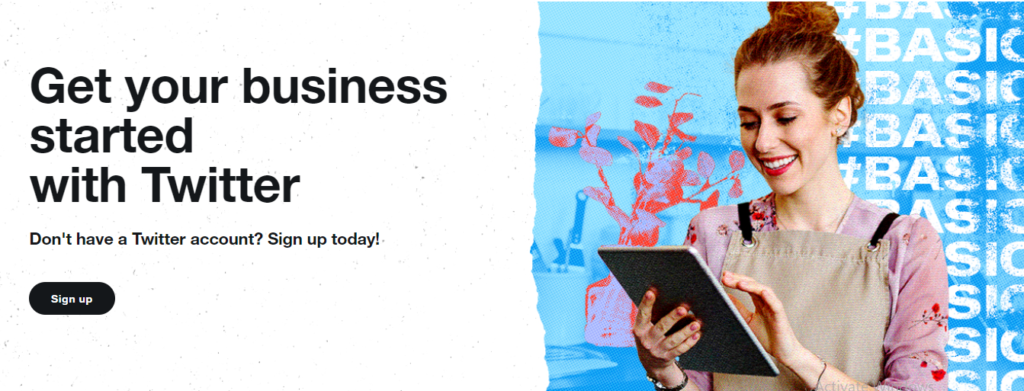
A Twitter Marketing is a planning of creating, publishing and distributing content for your buyer, audience, and followers through the Twitter platform. The goal of Twitter marketing strategy is to attract new followers and leads, boost conversions, improve brand recognition, and increase sales.
It’s important to establish your brand and business presence on Twitter. First impressions count, and your profile is your chance to make a lasting, positive one. Each element of your profile should accurately reflect your brand’s purpose and values, and persuade a potential customer to follow you.
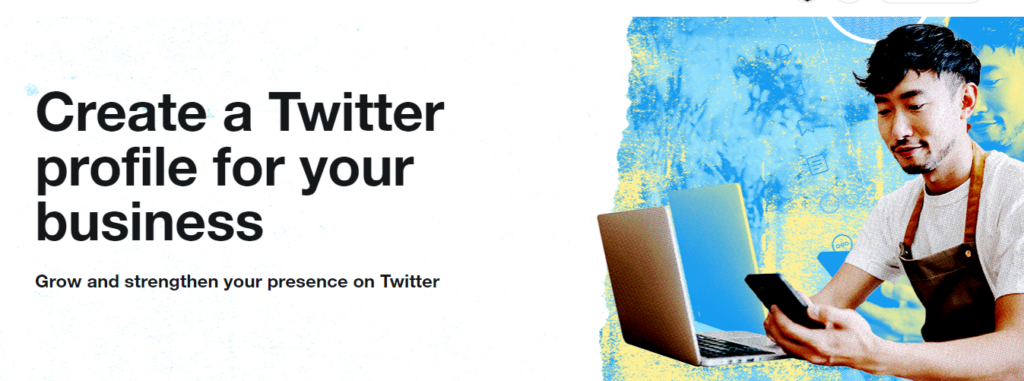
It’s important to establish your brand and business presence on Twitter. First impressions count, and your profile is your chance to make a lasting, positive one. Each element of your profile should accurately reflect your brand’s purpose and values, and persuade a potential customer to follow you.
We’ll break down the four key parts of a Twitter profile, along with tips and suggestions for each field.
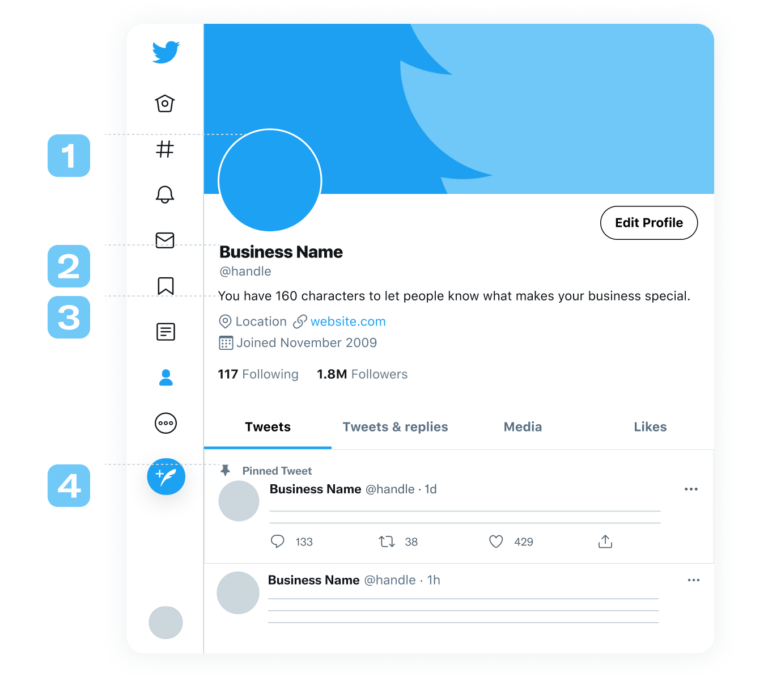
Choose a profile photo that visually represents your brand and fits well in a small, circular space — typically your logo. This doesn’t just appear on your profile — it’s the icon associated with every Tweet you post. Recommended dimensions are 400×400 pixels.
Your header photo should be an ever-changing billboard showcasing what’s new. This can be an upcoming launch or campaign, or a new photoshoot that nails your current vibe. Update it each quarter to keep things fresh and interesting. Recommended dimensions are 1500×500 pixels.
Make sure both photos are clear, high-quality, and create visual consistency. Upload photos in JPG, GIF, or PNG formats.
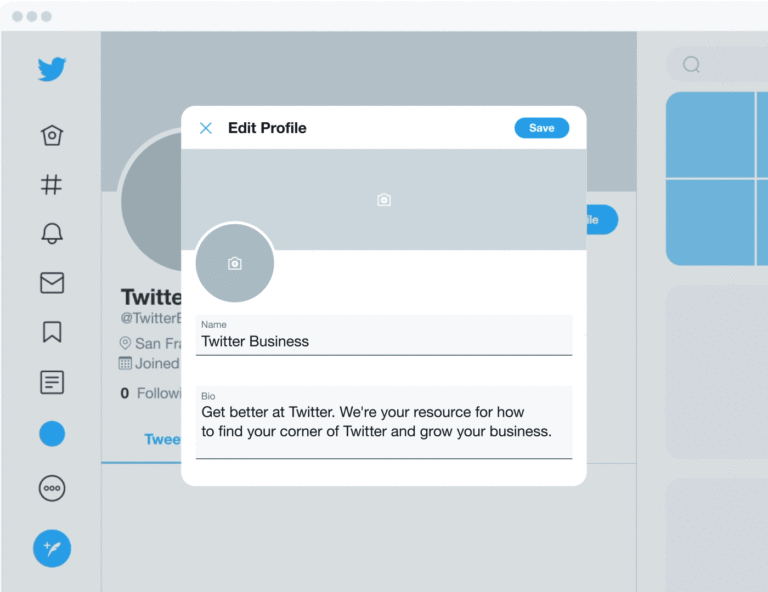
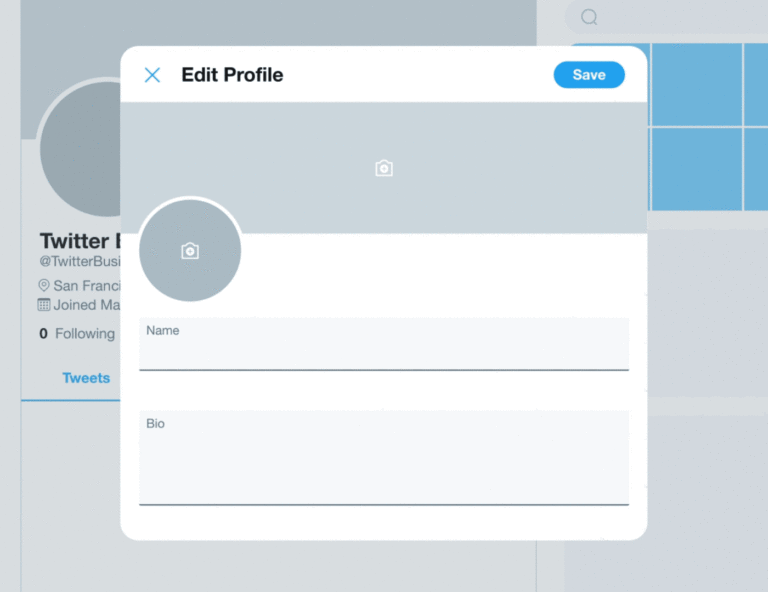
Your account @name is what comes after the “@”. It’s unique to you, appears in your profile URL, and is tied to everything you do on Twitter. It can contain up to 15 characters and should be directly associated with the name of your business.
Your display name appears right above your @name and can be changed at any time. A best practice is to have this be the name of your brand or business. It can contain up to 50 characters.
Channel your go-to elevator pitch here. In these 160 characters, you’ll be introducing yourself to the world. Tell people what you do, what value you bring, and why they should follow you.
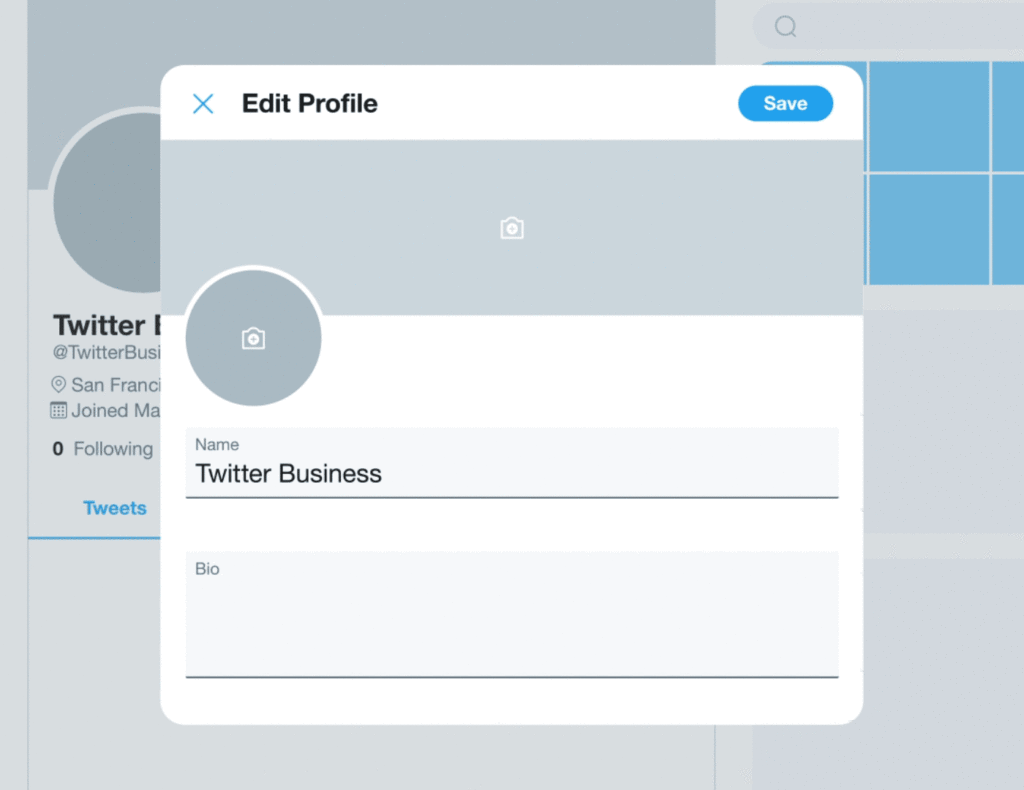
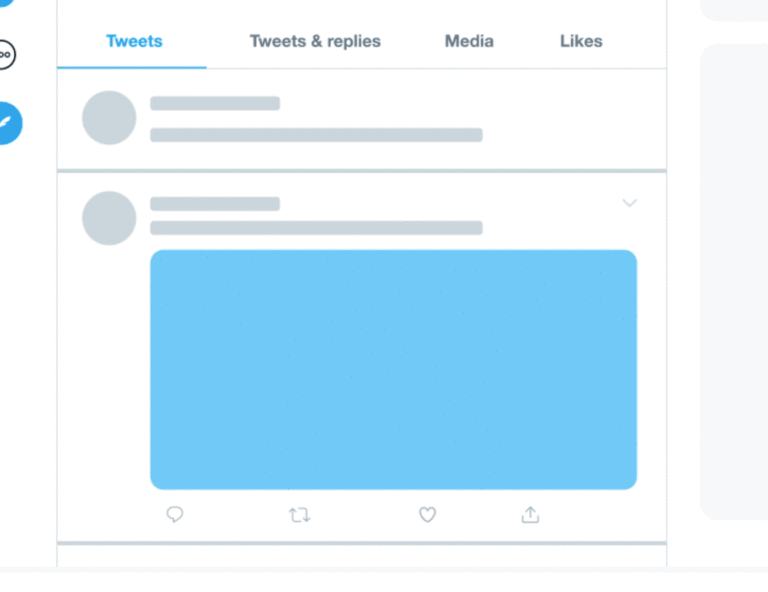
This is what you want your followers to focus on — your biggest, latest news. It’s ok if you have the same focus for several months in a row (e.g. if you’re raising money over a six-month period, then the same Tweet will do), but you should check in each month and ask yourself if you have a more pressing message to highlight. This can be:
To pin a Tweet, simply click the down arrow at the top-right corner of the Tweet and select “Pin to your profile”.

Help new audiences discover your business by engaging with other accounts.

Help your existing audience find you by sharing your @handle on your website, business cards, email signatures, etc.

Give people a reason to follow you by sharing frequently.
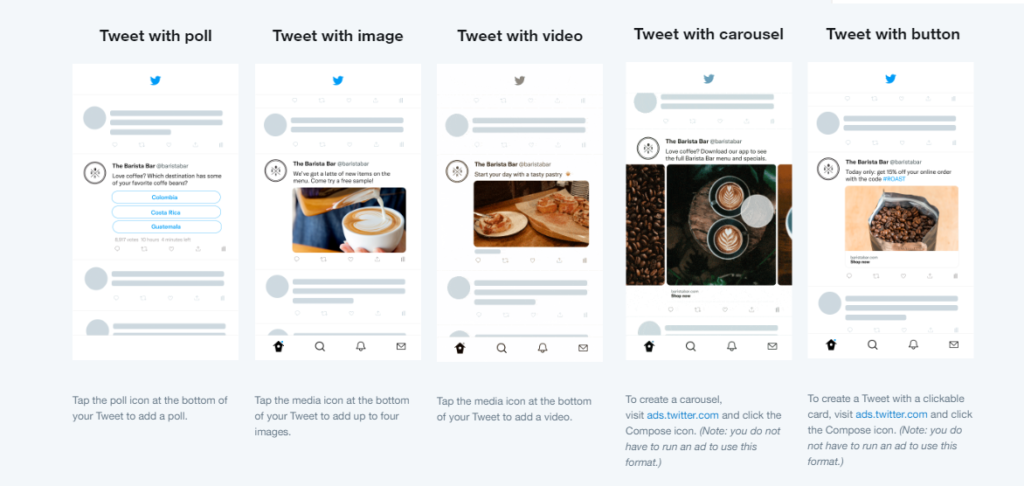
Here are some ideas on how to use Twitter for your business.
Hashtags are searchable identifying words or phrases that groups hundreds (or thousands) of tweets together. They’re a great way to increase the visibility of your content beyond your own followers. Many brands latch onto trending topics to contribute to the conversation or sell their products. You can also create your own hashtags to draw attention to your brand or events you are holding.
Direct messaging has evolved over the years, especially for brands. This is a major platform for troubleshooting your customers’ issues and handling their problems, and the way you interact with them is important. By default, only users you follow can send you DMs. You can set up your Twitter account to receive messages from anyone, though, making it easier for all customers to contact you. Simply go to Privacy Settings and enable “receive direct messages from anyone.”
Using photos and GIFs in your tweets is a great way to connect with followers. Engaging with your followers on Twitter is imperative to keep consumers interested in your brand. One fun way to involve your followers is to create a poll.
Live tweeting is another potential way to get a topic trending on Twitter. Essentially, live tweeting is when a user tweets their reactions to an event as it happens, whether it’s entertainment or breaking news.
It’s important to interact with the right people on Twitter. It’s always smart to engage with your customers to keep them happy and with potential customers to help them learn about your business.
You have plenty of advertising options.
Promoted Tweets: These ads look just like regular tweets, except that they are labeled “promoted” at the bottom, and they appear in the regular Twitter feeds of users who might not be following you yet. Promoted Tweets are a way to increase engagement and expand your reach to a wider group of users beyond your follower base.
Promoted Accounts: Promoted Accounts are designed to help brands become more discoverable and grow their numbers of followers. These ads are displayed in multiple locations on Twitter. Your Promoted Account ads target Twitter users whose interests are relevant to your brand, so you might gain followers who are actively engage with your content.
Promoted Trends: Promoted Trends appear at the top of the trending topics list in the trends box on Twitter. While Promoted Tweets and Promoted Accounts target specific users, Promoted Trends are visible to all users during their promotion period, including on the Twitter mobile app. Promoted Trend is a good way to get people talking about your business with a specific hashtag.
Engaging with other Tweets helps build relationships and increase the discoverability of your account.
“Like” to acknowledge or show support for a Tweet.
Retweet to share a Tweet you think your audience might find interesting. Select “Quote Tweet” to add a comment to your Retweet.
Reply to chime in on a conversation or have one-to-one conversations with customers.
Include someone’s @handle in your Tweet to loop them into a conversation.
Privately contact an account by sending a Direct Message (DM). This can be especially useful for providing customer support.
When you Tweet, you can see results in real time. This allows you to see what’s working so you can optimize future Tweets.
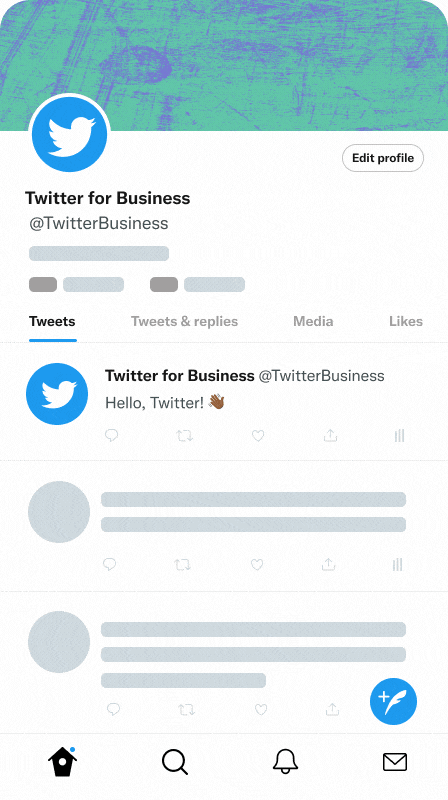
Keeping your account(s) organized needs to be a priority. Two popular third-party tools to help you do that are TweetDeck and Hootsuite.
TweetDeck
Which is owned by Twitter, is free to use and has a sleek user interface with customizable columns where you can organize lists, notifications, and your feed. You can also track hashtags in separate columns, schedule tweets in advance (something you can’t do on the Twitter website or mobile apps) and add multiple Twitter accounts to manage several users at once. TweetDeck is accessible via web browser.
Hootsuite
Which lets you manage other social media accounts besides Twitter, operates similarly to TweetDeck, allowing you to schedule your tweets, manage your replies, respond to messages and tweets, and generally automate your account’s management. It is arguably not as sleek or simple as TweetDeck, though, as it uses tabs for each profile you connect to it. Hootsuite offers a free version, or you can use the pro version for $9.99 per month.
Hootsuite and Twitter itself have mobile apps for use on a smartphone or tablet, and you can add multiple user accounts.
Twitter is highly-engaged platform can help with any business goal, whether it be to start a conversation around your product or services.Twitter’s advertising just keeps getting better and better—so now is the perfect time to up your game. SEO-Experts have Twitter Marketing experience which enables you to leverage the immense power of this superb social media platform to benefit your business. Contact the experts to deliver the best.
